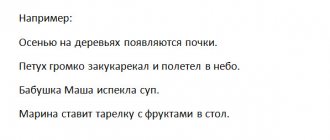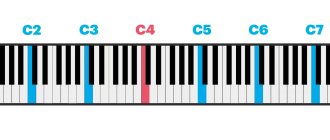As you know, the power of the voice serves as an excellent aid in the activities of professional artists who earn their living by using their voice in their work. However, strength and confidence in the voice can serve well not only people, so to speak, creative, but also completely ordinary people engaged in ordinary mundane affairs, developing their own business, advancing in their career, and simply those who are used to and love interacting with other people .
It's no secret that through proper placement of accents in the voice, setting stress and other similar manipulations, you can achieve a truly amazing effect, for example, have the necessary influence on people during negotiations, create a first-class impression of yourself, or influence any person in such a way as to so that it does what you need.
But can people with weak voices somehow influence it to become stronger? Of course they can, because there are many effective ways to do this.
How to make your voice stronger?
Firstly, it should be said that the method of increasing voice strength consists of three important components:
- The first and most important thing is to train the parts of the body that take part in the process of voice formation: vocal cords, muscles of the larynx, chest, etc.
- The second component can be called the work of training competent and correct pronunciation of the strongest sounds found in human speech
- And the third factor is adherence to a special diet, i.e. eating certain foods
Let's look at each of these points in more detail.
Muscle training to strengthen your voice
To train muscles to strengthen your voice, experts recommend performing the following exercises:
Exercise No. 1
You need to go to the mirror, open your mouth wide and try to see your larynx and tonsils. If you try to tense your throat or say something, you will see that the throat muscles go into a tense state and then relax again. Try to feel these muscles. This will not require a lot of time.
As soon as this result is achieved, begin to purposefully tense and relax the muscles of the larynx. Try to do this procedure without exerting much effort and controlling the pace of contraction.
After a certain amount of training, you will be able to perform these exercises without using a mirror, because you will already have acquired the skill of controlling the tension in your throat.
Exercise No. 2
In the same way, it is necessary to train other components of the voice-forming system. These include resonators that control the sounds you speak. These resonators are sources of sound and there are three types - chest, throat and nasal resonators.
Approach resonator training like this: stand in front of the mirror again and start making long sounds “i”, “e”, “a”, “o”, “u”, trying to change their sound. Try changing the tone from low to high and vice versa.
Keep in mind that the presented sequence of sounds was not chosen randomly, because each of them affects the body in a certain way: the sound “i” improves blood circulation, the sound “e” activates the muscles of the throat and neck, the sound “a” has a positive effect on the chest area, the sound “o” increases blood supply to the heart, and the sound “u” makes the voice deeper and lower.
We should not forget about several important components of the second exercise:
- When pronouncing the most powerful sounds, the facial muscles must be relaxed as much as possible, because this makes voice control much easier;
- Breathing must be correct, i.e. measured and even. Constricted and erratic breathing will prevent your voice from being strong and firm. In addition, when you inhale through your nose, you activate the nasal resonator;
- You need to control your posture - a straight and even position of the spine affects the timbre and quality of your voice. Strive to ensure that your spine is not tight and that you feel comfortable when you stand or walk - it will be much easier to develop the correct pronunciation.
In conclusion of this section, it can be noted that it is not only individual muscles that need to be trained, but the entire body in general. Only in this case can you achieve a good result in voice production.
Flight of the singing voice
Table of contents
| Acoustics of the vocal apparatus |
| Origin and propagation of sound |
| Tone and noise sounds |
| Pitch |
| Behavior of waves when encountering obstacles |
| The power of sound |
| Sound timbre |
| Resonance phenomenon |
| Resonators and soundboards |
| Sound of the glottis |
| Formants |
| The role of the nasal resonator |
| Vibrato |
| Sound emission |
| The vocal apparatus is a kind of mouthpiece |
| Radiation direction |
| Interconnected system |
| Flight of the singing voice |
Singers intuitively achieve good audibility of their voice, developing in it the quality of flight and range.
It has long been known that there are singing voices that do not have much power, but fly perfectly into the hall and are clearly audible even through the sound of the orchestra. All the mechanisms described above, with the help of which a singer can increase the audibility of his voice, boiled down to the creation of greater sound strength at the exit from the mouth opening, i.e., the greatest intensity, sound power. But the quality of flight, which we want to talk about, depends little on the strength of the sound emitted from the mouth opening. There are powerful voices that amaze with their strength in the immediate vicinity, in a small room or classroom, but turn out to be completely flightless in large rooms. They disappear, get lost in large spaces and do not penetrate the sound of the orchestra. Research has shown that the quality of flight is related to the timbre of the voice, and not with its strength, and this is explained by the presence of high overtones in the voice. A singer with a ringing, flying voice is able to shape the sound in such a way that a large percentage of the energy is concentrated in the sound in the zone of high singing formant. Why is there a sound in which a large percentage of the energy is concentrated in high-frequency region, has better flightability, When all frequencies of the spectrum are distributed in space equally? As it turned out, this quality of flightability is associated with the peculiarities of the perception of sounds by our hearing. Our ear has unequal sensitivity to different frequencies. Sounds of the same strength (amplitude) in different parts of the sound range are perceived by the ear as sounds of unequal volume. In some parts of the range they are perceived as sounds much louder than in others. If you offer to listen to a sound of equal strength, changing its pitch over the entire range of frequencies that the ear can perceive, then in the zone from 600 Hz to B000 Hz it will be perceived as the loudest sound. Up and down the sound scale from this zone of best audibility it will become weaker and weaker for the ear and finally disappear altogether, reaching the lower and upper thresholds of audibility. With sufficient sound strength, the hearing perceives from 116 Hz at the bottom to 20,000 Hz at the top. Beyond these limits lie infra- and ultrasounds, respectively, which we do not hear (only some species of animals hear them). The zone of best audibility of the ear includes the area in which all speech and singing formants are located. It is in this zone that weak sounds are perceived as quite loud. The ear is especially sensitive to the region of 2500-3000 Hz, i.e., to the region of high singing formants. This area resonates with the external auditory canal of the ear, and therefore it strongly transmits these vibrations to the eardrum. This explains the quality of sound flight, its ability to “fly through the orchestra”, to be clearly audible in large rooms. When there are many high frequencies in the sound spectrum that fall into zone of best audibility of the ear, especially frequencies in the region of 2500-3000 Hz, then even with a small force of sound delivery, i.e., its insignificant energy, it is perceived as a loud sound. This sound is well audible in the hall, and we say that it is flight If there are few frequencies in its spectrum that fall into the zone of best audibility, then it is poorly captured by the listener’s ear, even if the singer tries to give it greater strength.This means that the quality of flight of a singing sound does not depend on how the sound flies and spreads (all sounds travel equally ), but from how it is picked up by the ear. Rice. 33. Ear hearing curve. Sound of the same intensity is perceived at different frequencies as unequally loud to the ear. The zone of greatest volume falls at 2000-3000 Hz (the top of the curve), from where it falls to both low and higher frequencies.
Rice. 34. Curve of increase in sound pressure in the external auditory canal due to resonance (according to Bekesy). In the region of 2500 Hz is the highest point of the resonance curve. In this zone, even weak sounds are perceived as loud.
The ability to correctly form the timbre of the voice, to make it fly, fly, is an extremely important point in order to be clearly heard in the hall. Let us imagine, conditionally, that two singers sing, producing a sound of equal energy, i.e., the total strength of all overtones is equal. The first singer forms the timbre (case I) so that the main energy of his sound goes in the area of the fundamental tone and low-frequency overtones. In male voices, for example, the fundamental tones of the voice do not exceed 500 Hz, i.e., they never fall into the zone of best audibility of the ear. A sound formed without effort on the part of the singer in such a timbre quality, i.e. with such a spectrum, will be perceived as a low-power sound. In order to be loud to the ear, you need to greatly increase the energy of the sound, that is, give the vocal apparatus a large load. Rice. 24. However, the timbre can be formed in a completely different way (case II). It can be formed in such a way that the main energy is contained in high overtones, in the region of high singing formant. This sound, with a different distribution of energy along the spectrum, will be immeasurably louder for the listener than the first one, since the main part of the energy will be perceived by the most sensitive area of the ear, where even mild sounds are perceived as loud sounds. In a trained voice, in a well-formed singing timbre, the energy is always distributed so that approximately 30% of it is concentrated in the area of high singing formant. This ensures good flight of such sound (see Fig. 25 and 27). If we consider from this point of view, for example, the spectrum of Chaliapin’s singing sound (see Fig. 27), we can see that its fundamental tone at 220 Hz constitutes an insignificant part of the total sound energy, where the largest areas of “amplified” overtones fall at frequencies of 500 Hz and especially in the group 2400-2600 Hz, i.e. in the region of best sensitivity of the auditory organ. The correct formation of a singing timbre provides it with good flight (i.e., the best perceptibility by the ear) with minimal expenditure of muscle energy of the singer’s vocal apparatus.
Rice. 35. Distribution of energy in speech (1) and singing (2) sound (according to V. Morozov). In the singing voice, spectral energy is “pumped” from the low frequency region to the high frequency region, namely, to the region of greatest sensitivity of the ear.
Construction of a spectrum with a maximum concentration of energy in the high frequency region of the order of a high singing formant is the most important physiological adaptation of the vocal apparatus to obtain maximum audibility with minimal energy expenditure, which in practice is called a high position of sound. Vocal teachers know this well, working mainly on shaping the timbre of the voice, on the high position of the sound, and not on developing its strength. It has been known for almost a long time that audibility in the hall depends much less on the absolute strength of the sound than on the correct formation of the singing timbre. A correctly timbre-formed voice always flies well into the audience. In addition, as we remember, a singer with a voice that has a large percentage of high-frequency overtones in the spectrum can better “send” it in the desired direction, that is, towards the audience. The task of each student is to clearly understand this pattern and not to chase the strength of the sound, but to work on identifying the best timbre, on the sound of the voice in the so-called high position.
Acoustic conditions of the performance
Speaking about the audibility of the voice, we should touch in a few words on the acoustic conditions in which the singer has to sing. These conditions can be quite different: an open space or open stage, a concert or theater hall, a classroom, a recording studio or a radio studio. As you know, on open stages, as in a field or in a forest, the singer is hard to hear and it is difficult for him to sing. The voice spreads freely in all directions, without stopping and reflecting almost nothing, and easily dissipates. Decreasing in inverse proportion to the square of the distance, it reaches the listener's ear with only a very small percentage of its energy. To reduce such dispersion and create a preferential direction of sound towards the audience, a shell is usually placed behind the stage, reflecting sounds towards the listeners. It is difficult for a singer to sing, since under these conditions his ears do not receive the usual loud response; Wanting to overcome this, the singer begins to force the sound. This tires the voice, so it is not recommended for singers, especially inexperienced ones, to sing outdoors. In halls and auditoriums, walls (if they are not made of special sound-absorbing materials) reflect sounds, preventing them from leaving the room, returning them to the hall. Walls, ceilings and floors prevent sound energy from escaping. If the shape of the reflective surfaces of the room is calculated correctly, sounds reach all rows evenly; if incorrectly, then places in the hall with poor audibility appear - sound dips. You can often hear the expression that a particular room has a good or bad resonance. In this case, the word resonance refers to that echo, that echo of the room in which we speak or sing. This phenomenon has nothing to do with resonance in general and is only a residual sound, the so-called reverberation, which owes its origin to the repeated reflection of sound waves from large surfaces of the room. In everyday life, the reverberation of a room is often mistakenly called resonance. Meanwhile, resonance, which resembles an echo, has, as we know, a different origin and a different essence. If the obstacle that the sound wave encounters is one and large (the border of a forest, the slope of a gorge, etc.), then the reflected wave returns, bringing in a weakened form the sound that we sent. This phenomenon is called echo. If there are many obstacles (walls, ceiling, floor, objects in the room), then multiple, different-time reflections occur, the waves overlap each other, forming a hum. Both in the phenomenon of echo, and with any reverberation, the same pitch of sound is always preserved in the echo , which we published. If there are a lot of soft things, curtains, carpets in the room, the sound is easily extinguished and the residual sound is small. In empty rooms, the sound, repeatedly reflected from large free areas, creates a long-term residual sound, a humming, which makes it difficult to hear your voice and interferes with sing. A room with very little residual sound also makes singing difficult, since the ear does not hear the usual strength of the response to the sound produced. For singing practice, it is most advantageous to use a class with moderate reverberation, but sometimes it is useful to change the acoustic environment so that habituation does not occur to a specific room. Since the singer has to sing in different acoustic conditions, his perception of the strength of his own voice is always different. You should not succumb to auditory deception. We must try to maintain the usual manner of sound production.
Conclusion From an acoustic point of view, the vocal apparatus is a kind of horn, where above the source of vibration (glottis) there is a system of resonator cavities (larynx, pharynx, mouth), which open into the outer space with their mouth (oral opening). In the resonator cavities, the voice acquires characteristic amplifications - formants that determine its sound. In a correctly delivered singing voice, high and low singing formants are constantly present, as well as vibrato of a certain frequency, on which the singing timbre of the voice depends. Each singing sound is, in addition, characterized by its own vowel formants, by which one vowel differs from another. The efficiency of the vocal apparatus is small, and the sound emitted from the mouth opening quickly decreases in strength as the distance increases. Voice production should be considered as finding the best relationship between the phonating glottis and the system of resonators of the larynx, pharynx and mouth. With the resulting interconnected system of oscillations of the resonators and the glottis, the efficiency of the vocal apparatus in singing increases greatly. In addition, with the correct voice production, the singer forms the timbre in such a way that the largest possible percentage of sound energy goes to the area of high singing formant - the area that is best perceived by our ear. The main task of a singer and teacher working to improve their voice is to correctly form the timbre and find the best conditions for the natural free functioning of the vocal apparatus.
Training the correct pronunciation of sounds
Training the correct pronunciation of sounds also involves performing a number of exercises.
Exercise No. 1
First, you should start mastering the sound “r”. To work on the sound “r”, it is recommended to do the exercise in three stages:
- At the first stage, we pronounce “r” very quietly
- At the second stage, we pronounce “r” with medium volume
- At the third stage, we pronounce “r” as loudly as possible
Try to make the sound you pronounce as correct, sonorous and clear as possible - this will allow you to make your voice stronger by adding a somewhat “metallic” sound to it.
But before practicing the sweeping pronunciation of the sound “r”, you need to prepare the muscles for work using the methods that we discussed above, as well as by pulling the tip of the tongue towards the upper palate in the area of the upper teeth. Having given your tongue this position, pronounce any words where the letter “r” is present, or make a loud growl, imagining yourself, for example, as a ferocious tiger.
Exercise No. 2
The second exercise is a rather original technique for increasing the power of your voice through unusual behavior. It sounds a little unusual, but you should start acting like Tarzan from the famous movie.
To do this, stand up straight, clench your hands tightly into fists and begin to pronounce in turn all those sounds that we talked about earlier, or some others.
But remember that you need to pronounce sounds as loudly as possible and while exhaling, and with your hands you should beat yourself in the chest from time to time, imitating the behavior of the above-mentioned hero. If you don’t associate Tarzan with this image, you can imagine yourself as a gorilla - then you’ll definitely succeed.
The "Tarzan" or "monkey" exercise will not only help you strengthen your voice, but will also clear out debris, mucus and moisture from your diaphragm. So, don't be surprised if you suddenly have a cough. And after you clear your throat, be “Tarzan” a little longer to consolidate the result.
It is also interesting that voice training experts advise doing this exercise in the morning, indicating that it will serve as an effective exercise for the body as a whole. And given that you have a long day ahead, this can bring you double results.
Chaliapin's exercise for tuning your voice
The great Russian singer Fyodor Chaliapin also began every morning with a growl. But he did not perform it alone, but together with his bulldog. After training the sound “r”, Fyodor Ivanovich began to bark at his pet: “av-av-av”.
You can repeat Chaliapin’s exercise or, if you can’t relax your larynx, replace it with a villainous theatrical laugh. This is done simply. With your mouth open, as you exhale, you laugh evilly: “a-a-a-a-ha-ha-ha-ha-a-a-a-a.” The sound should come out easily and freely. At the same time, you can jump and beat yourself in the chest with your hands. This exercise will instantly clear your voice and prepare it for work.
Diet to strengthen your voice
In addition to the fact that today you can find a lot of different diets that have a beneficial effect on physical and even mental health, there is also a special diet that has a targeted effect on the strength of the voice. But if you thought that now you will need to radically change your diet, then we hasten to reassure you: you won’t have to change much.
Today it is known for certain that egg yolk, if consumed raw, has an excellent effect on the surface of the vocal cords and throat, making them softer and more elastic. For this reason, nutritionists for professional artists insist that you must eat one raw egg every morning.
Besides eggs, there are other foods that can help strengthen your voice. First of all, speaking about such products, we need to talk about milk - it, like eggs, makes the vocal cords elastic and soft. But milk should not be consumed cold, but not hot either. It should be warm, i.e. its temperature should be lower than the temperature of the milk that many of us drink for colds, otherwise you will simply burn your ligaments.
If you don’t like milk or, God forbid, you are allergic to it, you can replace this product with sweet warm tea. It is no coincidence that sugar is mentioned here, because it contains glucose, which also affects the elasticity of ligaments.
That's all, actually. Do the exercises we presented at least once a day, and within a week your voice will become stronger and more velvety. And having introduced these exercises into the system, after a while you will no longer remember that your voice was once weak, because... the body adapts and gets used to new stress.
We also recommend reading:
- Storytelling
- Oratory: exercises
- How to learn to relax: effective relaxation techniques
- How to teach a child to pronounce the sound “R”
- Animal Flow System
- Improvisational exercises to improve communication skills
- Guide to Developing Concentration
- Methods of mental self-regulation
- Meditation with mantras
- Muscle relaxation: relaxation techniques
- Isometric exercises
Keywords:1Storytelling







